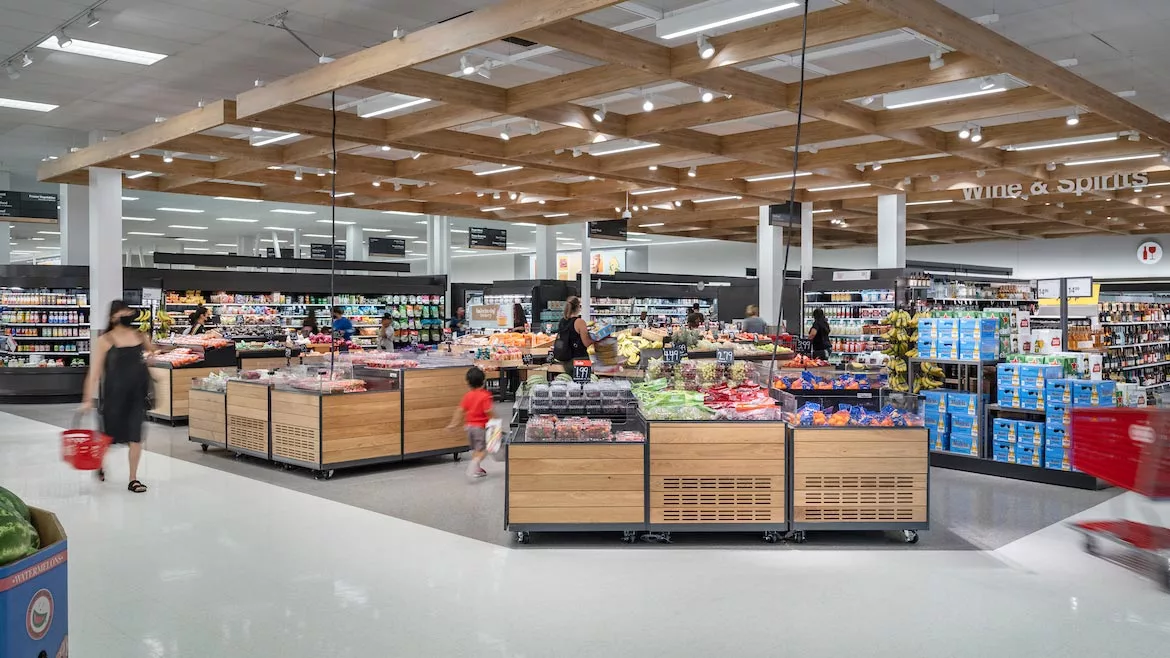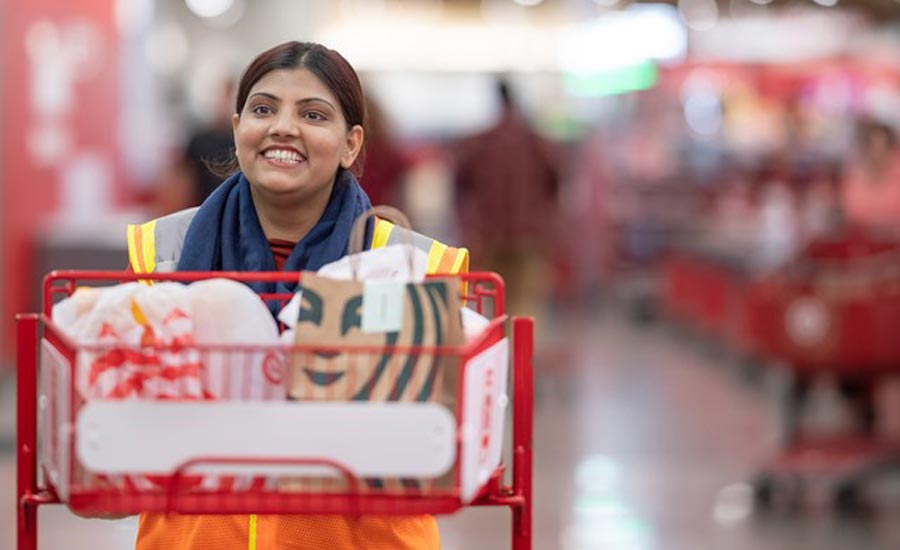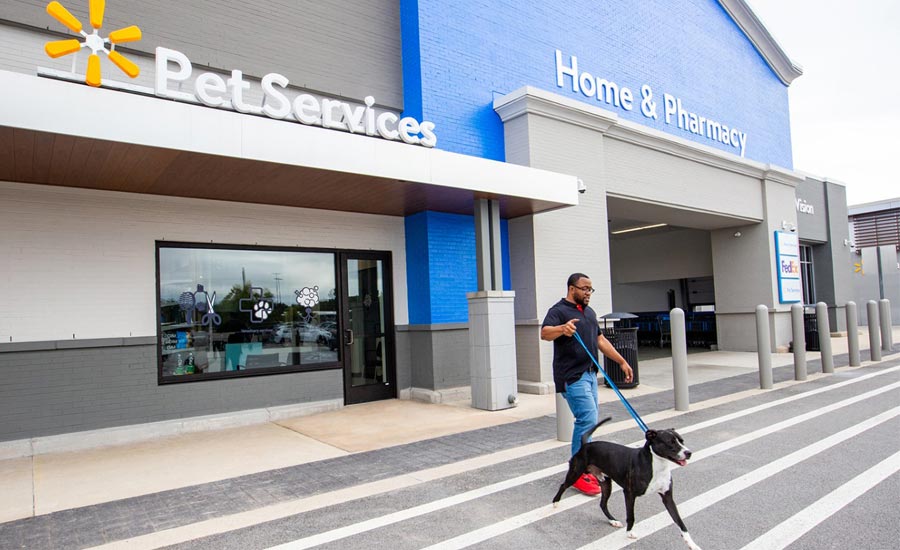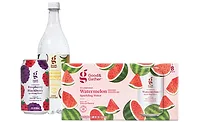Channel Strategies
Mass merchandisers capitalize on grocery items, services
Consumers spending more on food and drink, reducing discretionary spend

Image courtesy of Target Corp.
American soul and R&B singer Ben E. King, who rose to prominence as one of the lead singers of the group The Drifters, once said: “One minute we can be in a small club, the next minute we can be in a coliseum, and the next minute we can be in a small auditorium. It varies, depending on the promoter, the budget and the traveling distance.”
Similarly, as shoppers embrace omnichannel shopping based on promotions, convenience and — given today’s economic climate — their budget, experts note that mass merchandisers are capitalizing on value, variety and services.
Brittany Steiger, retail and eCommerce analyst at Mintel, Chicago, points to affordability as driving traffic for mass merchandisers.
“Overall, a key takeaway is that consumers’ continued increased focus on value (i.e., affordability, quality private label brands) is impacting their shopping habits and preference for mass merchandisers,” she says.
Further, Steiger notes that the Top 3 reasons indicated for shopping at mass merchandisers all show an increase compared with last year’s report “Mass Merchandisers – US – 2022”:
- Prices are affordable: 75% (up from 68% in 2022)
- Wide selection of items: 64% (up from 60% in 2022)
- Good quality store brands: 48% (up from 41% in 2022)
Grace Wood, senior analyst at IBISWorld, New York, notes that during the past year, mass merchandisers have performed differently based on their product mix.
“While department store (Target, Macy’s) sales have dwindled over the past year, sales at warehouse clubs and supercenters (Walmart, Costco) are up,” Wood explains. “Warehouse clubs and supercenters’ growth can be attributed to an increase in grocery sales, which account for a much larger share of their total revenue compared to department stores. According to both companies’ latest quarterly reports, Walmart’s grocery sales comprise 60.4% of their revenue, while just 23.1% of Target’s sales come from groceries.”

Image courtesy of Target Corp.
Expanding on convenience, services
As consumers continue to be drawn to convenience and overall value, experts note that mass merchandisers positioned to deliver flexible shopping experiences in an omnichannel future are set up for success.
However, for retailers with little or no online presence, omnichannel shopping can pose a threat, IBISWorld’s Wood notes. “Conversely, those with established online platforms are benefiting from omnichannel shopping, which makes the shopping experience more convenient for consumers and allows for more personalization,” she says.
To bring more convenience and personalization to shoppers, Minneapolis-based Target Corp., announced this summer that guests nationwide will be able to add Starbucks menu items to a Drive Up order and have it delivered to their car at stores offering the retailer’s free Drive Up service. The service is slated to be available at all the 1,700-plus stores with Starbucks Cafés and Drive Up service by October, according to the company.
Through the Target app, guests with a Drive Up order can add a Starbucks purchase to be delivered to their car through Target’s free, contactless curbside service, the company says. The nationwide launch follows a successful pilot that applied Target’s test-and-learn approach to enhance guest and team member experiences, it notes.
“Our guests have long told us Drive Up is a game-changer, adding convenience to their daily life, especially when they’re short on time,” said Mark Schindele, chief stores officer for Target, in a statement. “We’ve continued listening to our guests, who’ve told us overwhelmingly that Drive Up with Starbucks would bring even more ease and joy to every Target run. This one-of-a-kind service — available only at Target — is the latest example of how we’re innovating every day to meet the needs of our guests.”
IBISWorld’s Wood points to mass merchandisers expanding on services at a time when consumers are cutting back on discretionary items.
Amid inflationary pressures, consumers are spending less on items, like home furnishings, and more on essentials, like groceries and healthcare items — “encouraging mass merchandisers to venture into healthcare services,” she says. “Costco recently added virtual medical care to its services mix, joining Walmart and Dollar General, which have existing healthcare operations.”
Further, Wood points to non-retail services as a means for mass merchandisers to offset declines in retail sales.
“Supercenters have been providing most of the growth for mass merchandisers as their grocery sales have swelled over the past year,” Wood says. “Supercenters have also exhibited more adventurous growth strategies by incorporating non-retail services into their businesses.
“In addition to their healthcare services, Walmart recently opened a pet services center in Georgia,” she continues. “These more lucrative services can help mass merchandisers offset retail slumps.”

Image courtesy of Walmart Inc.
Looking ahead
As convenience and affordability remain top of mind for many consumers, experts note that mass merchandisers are uniquely positioned to deliver on quality products, services at low prices.
As far as beverage trends impacting the channel, IBISWorld’s Wood notes that health consciousness is the largest driver, prompting mass merchandisers to stock more functional drinks.
“Popular functional beverages feature ingredients like electrolytes, herbs and botanical extracts,” she says. Further, as regulations surrounding the sale of alcohol at mass retailers are easing, sales have boosted for eligible stores, Wood notes.
Looking ahead, Wood predicts that mass merchandisers will continue venturing into non-retail services to mute the seasonal volatility of retail and drive sales during economic downturns.
“Inventory shrink will boost employment as supercenters replace self-checkout lanes with cashiers and hire workers to provide additional supervision and security,” she concludes.
Looking for a reprint of this article?
From high-res PDFs to custom plaques, order your copy today!






